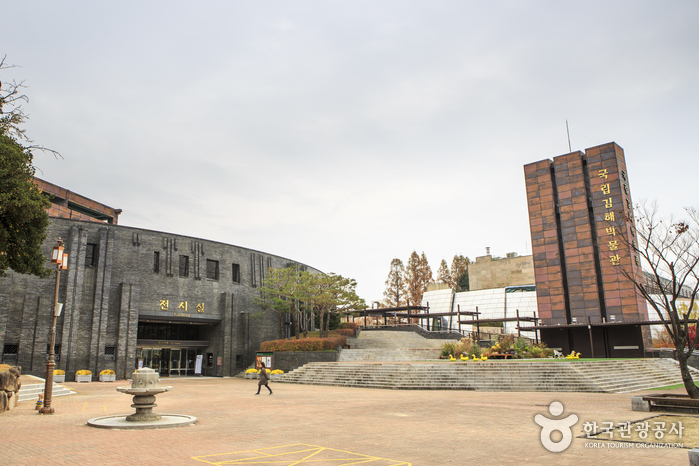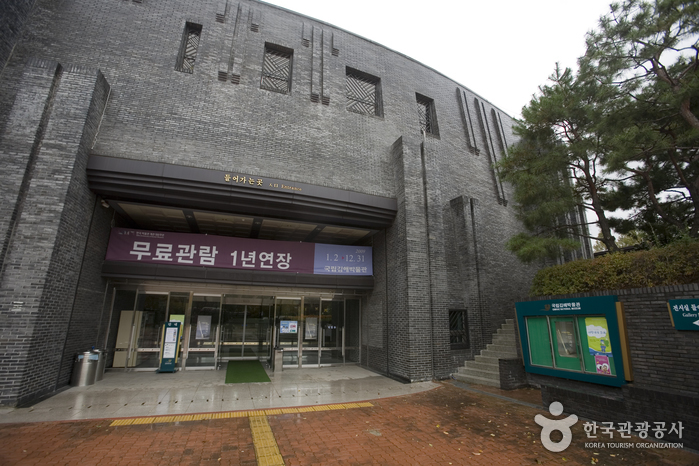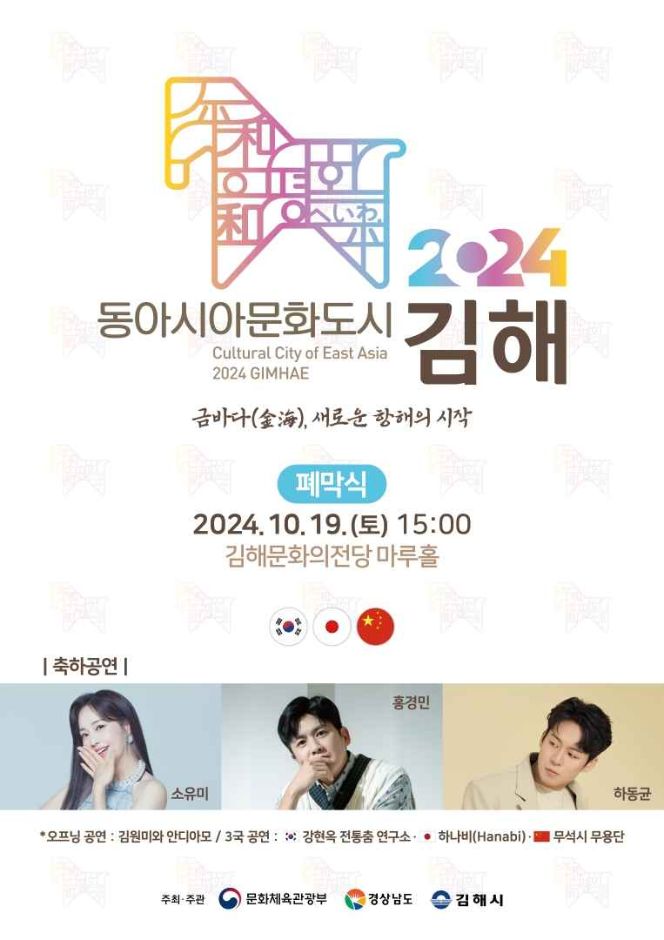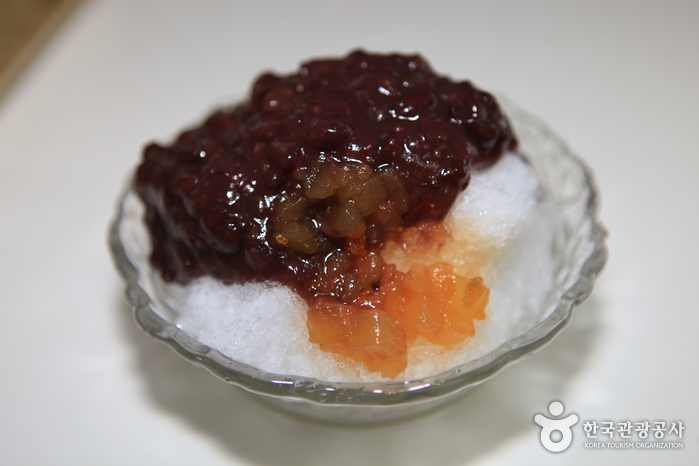Gimhae National Museum (국립김해박물관)
17.1Km 2024-01-23
190 Gayaui-gil, Gimhae-si, Gyeongsangnam-do
The Gimhae National Museum was opened on July 29, 1998, in order to research and preserve the cultural heritage of the ancient kingdom of Gaya. The museum is at the foot of Gujibong Peak in Gimhae-si, the spot where the kingdom is believed to have been founded. The museum exhibits the cultural assets of Gaya, as well as cultural relics from the prehistoric age in the Busan and Gyeongsangnam-do areas, and the cultural heritage of Byeonhan, which was the foundation for the growth of Gaya.
The exterior of the museum is made using black bricks representing iron ore and charcoal famous during the Gaya Kingdom. There are two exhibition halls, while the walkway to the halls have approximately 1,300 artifacts in display.
Seollal Traditional & Cultural Event of Gimhae National Museum (국립김해박물관 설맞이 전통문화행사)
17.1Km 2020-03-21
190, Gayaui-gil, Gimhae-si, Gyeongsangnam-do
• 1330 Travel Hotline: +82-2-1330
(Korean, English, Japanese, Chinese) • For more info: +82-55-320-6821
To greet Seollal, one of the biggest national holidays in Korea, Gimhae National Museum hosts a “Seollal Traditional & Cultural Event.” During the event, visitors can take part in traditional activities and view regional cultural assets.
Bunsanseong Fortress (김해 분산성)
17.1Km 2023-01-18
210-162, Gaya-ro 405beon-gil, Gimhae-si, Gyeongsangnam-do
+82-55-330-3925
Bunsanseong Fortress was constructed in the 3rd year of the reign of Goryeo's King U (1377) by Magistrate Park Wi to defend against foreign enemies, but it was destroyed during the Japanese invasion of 1592. The fortress we see today was reconstructed by Magistrate Jeong Hyeon-seok in the 8th year of the reign of Joseon's King Gojong (1871). However, it is estimated that it was first built during the days of Gaya. It is a temoe-style fortress with rocks piled up like a long band at the peak of Bunsan from which downtown Gimhae, Gimhae Plains, the Nakdonggang River and the South Sea are all in a single, panoramic view. Today, fortress walls remain stretching for some 900 meters on the slope towards the city and, inside the fortress, there are two gate sites in the south and north, an auxiliary gate on the west, a well site and several other building sites. The exact length of the remaining fortress walls is 929 meters and the average x_width is about 8 meters.
Inside the fortress lies Haeeunsa Temple, which was built to pay respects to Queen Heo of Garak who had come from the sea, according to stories. The temple also enshrines portraits of King Suro and Queen Heo that were painted during the Joseon dynasty. During the Japanese invasion of 1592, monk soldiers were stationed at this temple.
The fortress is more popularly called "Manjangdae" by Gimhae locals, and this name originated from the description, "A tall tower 10,000 (man) gil in x_height," granted by Daewongun in the Joseon dynasty for this advanced base that defeats Japanese invaders. A writing of "Manjangdae" written by Daewongun himself as well as his stamp are engraved on a rock behind a beacon that was restored in 1999.
Busan St Mary's Hospital (부산성모병원)
17.1Km 2025-07-07
25-14 Yongho-ro 232beon-gil, Nam-gu, Busan
Busan St. Mary's Hospital, which is almost 20 years old, has 26 departments and 377 beds, with approximately 100 medical staff members and 700 employees.
The Specialized Pediatric Center provides differentiated medical services, with six pediatricians as well as specialists in urology, ophthalmology, orthopedics, surgery, rehabilitation medicine, and otolaryngology. The Hospice and Palliative Care Center, designated as a specialized palliative care institution by the Ministry of Health and Welfare in 2009, operates a hospice ward while providing home-based hospice care for patients who cannot be hospitalized.
In 2007, the hospital opened a sign language interpretation office, the first of its kind in Korea and the only one in Busan. Two professional sign language interpreters working at the office provide sign language interpretation services. Busan St. Mary’s Hospital is a leading medical institution in the community committed to providing optimum medical services to patients by understanding their needs.
E-Mart - Yeonje Branch [Tax Refund Shop] (이마트 연제)
17.2Km 2024-04-22
89, Yeonsu-ro, Yeonje-gu, Busan
-
Olive Young - Busan Geoje Branch [Tax Refund Shop] (올리브영 부산거제점)
17.2Km 2024-06-26
1F, 93, Asiad-daero, Yeonje-gu, Busan
-
Culture City of East Asia Gimhae (동아시아문화도시 김해)
17.3Km 2024-10-18
2060 Gimhae-daero, Gimhae-si, Gyeongsangnam-do
+82-51-781-2437
The Culture City of East Asia is an agreement to promote diverse cultural exchanges between Korea, China, and Japan. Under the value of respect for cultural diversity among Korea, China, and Japan, each year one city from each country is designated as a “Culture City of East Asia” to practice the spirit of “East Asian consciousness, cultural exchange and convergence, and understanding of other cultures.” (Source: Culture City of East Asia website)
Gimhae Arts and Sports Center (김해문화의전당)
17.3Km 2022-12-29
2060, Gimhae-daero, Gimhae-si, Gyeongsangnam-do
+82-55-320-1234
The Gimhae Arts and Sports Center is a performance hall for high-class performances. Maru Hall is a multi-purpose theater that also contains a moving orchestra shell with a sound reflection board for a smaller concert hall inside the theater. Nuri Hall is an experimental theater for performances in a variety of themes. The center also features the outdoor theater Aedureum Madang, Yunseul Art Gallery, Media Center, Sports Center, and Aram Learning Center, as well as a café and restaurants.
Daedong Halmae Guksu ([백년가게]대동할매국수)
17.3Km 2024-02-23
8 Dongnam-ro 45beon-gil, Daedong-myeon, Gimhae-si, Gyeongsangnam-do
Daedong Halmae Guksu, a well-known noodle restaurant in Gimhae, is famous for its signature dish, janchiguksu (banquet noodles). The restaurant serves naturally dried noodles paired with a flavorful broth made from anchovies sourced from the southern coast. Each table is equipped with chili peppers and seasoning sauce, allowing diners to customize their dish to their taste. In addition to janchiguksu, the menu also includes bibimguksu (spicy noodles) and yubuchobap (fried bean curd riceball).
Halmae Patbingsu Danpatjuk (할매팥빙수단팥죽)
17.5Km 2019-11-11
24, Yongho-ro 90beon-gil, Nam-gu, Busan
+82-51-623-9946
Halmae Patbingsu Danpatjuk has over 30 years' experience in pat bingsu (shaved ice with sweetened red beans) and danpatjuk (sweet red bean porridge). Located in Yongho-dong, the restaurant is close to Igidae Park, and therefore easily accessible by bus through the Igidae Park bus stop.



![E-Mart - Yeonje Branch [Tax Refund Shop] (이마트 연제)](http://tong.visitkorea.or.kr/cms/resource/70/2885470_image2_1.jpg)


 English
English
 한국어
한국어 日本語
日本語 中文(简体)
中文(简体) Deutsch
Deutsch Français
Français Español
Español Русский
Русский